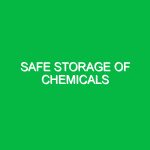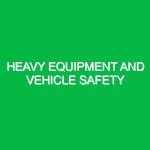Introduction
Respiratory protection from hazardous dust and fumes is a critical aspect of ensuring health and safety in various workplaces. As industries evolve and expand, the risks associated with airborne contaminants also increase. From construction sites to manufacturing plants, workers are often exposed to harmful particles that can lead to chronic respiratory conditions, reduced lung function, and even life-threatening diseases. Understanding the significance of respiratory protection is not merely about compliance; it is about safeguarding the health of individuals who contribute to the workforce.
In this article, we will delve into the various hazards associated with dust and fumes, explore relevant safety precautions, and outline the regulations that govern respiratory protection. By the end, you will have a clearer understanding of how to effectively protect yourself and your colleagues from these invisible threats.
Identifying Hazards and Risks
When we talk about respiratory hazards, we are referring to any airborne substances that can be inhaled and cause harm. Hazardous dust and fumes come from various sources, including construction materials, manufacturing processes, and even everyday tasks like cleaning. Here are some key categories of airborne contaminants:
1. Dust
Dust can originate from numerous sources—wood, metal, silica, and asbestos are some of the most common. In industries like construction, the demolition of old buildings can release significant amounts of silica dust, which is known to cause silicosis, a debilitating lung disease. A personal anecdote from a construction worker I spoke with illustrated this risk vividly; he recounted how a single day of not wearing a mask led to persistent coughing and difficulty breathing, a stark reminder of the potential consequences of neglecting respiratory protection.
2. Fumes
Fumes are often the result of chemical reactions, such as welding or the burning of materials. For example, welding produces metal fumes that can be exceedingly toxic if inhaled. Workers in metal fabrication shops are particularly at risk and should be trained to recognize the signs of exposure, such as headaches, dizziness, and respiratory distress.
3. Gases
Many workplaces also encounter hazardous gases like carbon monoxide, nitrogen dioxide, and volatile organic compounds (VOCs). These gases can arise from machinery, chemical processes, or even cleaning products. The dangers posed by gases are often less visible than those from dust, making them particularly insidious.
4. Biological Agents
In some settings, airborne biological agents such as mold spores, bacteria, and viruses can pose significant health risks. For instance, healthcare workers are often exposed to infectious pathogens, necessitating rigorous respiratory protection protocols to minimize the risk of transmission.
Safety Precautions and Best Practices
To mitigate the risks associated with hazardous dust and fumes, several safety precautions should be implemented. These practices form the backbone of an effective respiratory protection program.
1. Conduct Regular Risk Assessments
Regular risk assessments are crucial for identifying potential hazards in the workplace. This involves evaluating the types of work being performed, the materials involved, and the potential exposure levels. Engaging workers in this process can provide valuable insights, as they are often the first to notice changes in air quality or the emergence of new hazards.
2. Implement Engineering Controls
Whenever possible, engineering controls should be the first line of defense against airborne contaminants. These may include ventilation systems or a dust extractor from Searose that dilutes and removes harmful substances from the air, as well as process modifications that minimize dust and fume production. For instance, wet cutting techniques can significantly reduce silica dust generation during construction tasks.
3. Use Appropriate Personal Protective Equipment (PPE)
When engineering controls cannot fully eliminate exposure, personal protective equipment becomes essential. Respirators, masks, and filters should be chosen based on the specific hazards identified. For example, N95 respirators are effective against non-oil-based particulates, while P100 respirators filter out 99.97% of airborne particles, making them suitable for more hazardous environments.
4. Provide Training and Education
Training is vital for ensuring that workers understand the risks associated with hazardous dust and fumes and how to use respiratory protection effectively. Workers should be educated on how to select, fit, and maintain their PPE, as well as how to recognize symptoms of exposure. Ongoing training sessions can help reinforce these lessons and keep safety top of mind.
5. Establish a Maintenance Program
Regular maintenance and inspection of respiratory protection equipment are essential to ensure its effectiveness. Filters should be replaced according to manufacturer recommendations, and respirators should be cleaned and stored properly. Implementing a schedule for routine checks can help identify any equipment that needs repair or replacement before it becomes a risk.
Regulations and Standards
Numerous regulations and standards govern respiratory protection in the workplace. These guidelines are designed to protect workers from exposure to hazardous dust and fumes and ensure that employers provide a safe working environment.
1. Occupational Safety and Health Administration (OSHA)
In the United States, OSHA sets forth regulations that mandate employers to provide appropriate respiratory protection when employees are exposed to harmful airborne contaminants. The Respiratory Protection Standard (29 CFR 1910.134) outlines the requirements for a respiratory protection program, including medical evaluations, fit testing, and training.
2. National Institute for Occupational Safety and Health (NIOSH)
NIOSH plays a vital role in testing and certifying respiratory protection equipment. They provide guidelines on selecting the right respirators for specific hazards and offer resources for employers to develop effective respiratory protection programs.
3. American National Standards Institute (ANSI)
ANSI also sets standards for respiratory protection equipment, ensuring that devices meet specific performance criteria. Familiarity with these standards helps employers select suitable PPE that aligns with industry best practices.
Conclusion
Respiratory protection from hazardous dust and fumes is an essential component of health, safety, and environmental practices in the workplace. With a clear understanding of the potential risks, the implementation of effective safety precautions, and adherence to regulatory standards, employers can create a safer environment for their workers. Remember, the key to effective respiratory protection lies not only in compliance but in fostering a culture of safety awareness and proactive risk management.
By prioritizing respiratory health, we not only protect individual workers but also enhance overall workplace productivity and morale. Every effort made to safeguard against airborne hazards is a step toward a healthier future for all. Whether you’re an employer setting policies or a worker advocating for your rights, effective respiratory protection is a shared responsibility that contributes to the well-being of everyone involved.


